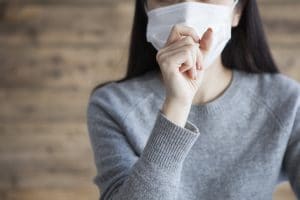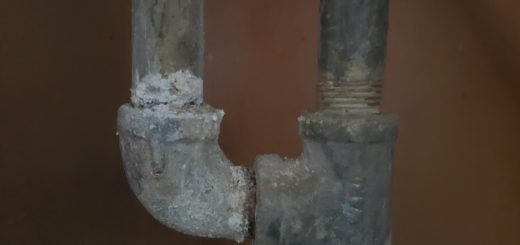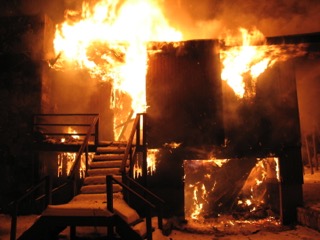Breathing Complications Caused by Spring Mold
A home is where people spend the majority of their days. Most people occupy their residences for up to 16 hours each day, making a safe environment a priority. When spring moldMold is a type of fungus that grows in damp or humid conditi... More latches onto indoor surfaces, the surroundings become a breeding ground for all sorts of illnesses that affect breathing.
Springtime is an opportune time for molds to flourish. The last of winter’s snows melt away, and the spring showers add plenty of moisture to the environment. Since moldMold is a type of fungus that grows in damp or humid conditi... More feeds on both oxygenOxygen is a chemical element essential for combustion and li... More and moisture-rich spaces, the dampness inside a home makes it a haven for spring moldMold is a type of fungus that grows in damp or humid conditi... More growth.
Thousands of moldMold is a type of fungus that grows in damp or humid conditi... More varieties grow in the typical American home. Five of the most common indoor molds are Alternaria (causes allergies), Cladosporium (triggers asthmatic symptoms), Penicillium (causes allergies and asthma), Aspergillus (can provoke lung infections) and StachybotrysStachybotrys is a type of black mold (often called “black ... More (can cause severe breathing complications).
MoldMold is a type of fungus that grows in damp or humid conditi... More sporesSpores are microscopic reproductive units of fungi or mold t... More are microscopic and therefore can be inhaled easily. The health consequences of prolonged bouts of breathing in moldMold is a type of fungus that grows in damp or humid conditi... More sporesSpores are microscopic reproductive units of fungi or mold t... More can be detrimental, especially to individuals with existing respiratory conditions. Spring moldMold is a type of fungus that grows in damp or humid conditi... More sporesSpores are microscopic reproductive units of fungi or mold t... More, whether living or non-living, have the ability to wreak havoc on an individual’s health.
Spring Mold Provokes Allergies
The molds Alternaria and Cladosporium are the most infamous of all moldMold is a type of fungus that grows in damp or humid conditi... More sporesSpores are microscopic reproductive units of fungi or mold t... More to cause allergies. Cladosporium flourishes in the great outdoors as well as the indoors. The airborne characteristic of the sporesSpores are microscopic reproductive units of fungi or mold t... More allows them to spread far and wide.
Different people experience varying sensitivities to moldMold is a type of fungus that grows in damp or humid conditi... More. A few people, in the severest instances, develop asthma as a result of continuously inhaling moldMold is a type of fungus that grows in damp or humid conditi... More sporesSpores are microscopic reproductive units of fungi or mold t... More. In the same vein, moldMold is a type of fungus that grows in damp or humid conditi... More can spur the onsetOnset refers to the beginning or initial appearance of damag... More of allergies. If the individual suffered from allergies prior to breathing in moldMold is a type of fungus that grows in damp or humid conditi... More, the sporesSpores are microscopic reproductive units of fungi or mold t... More can exacerbate the allergy symptoms.
People may experience allergy symptoms that are due to moldMold is a type of fungus that grows in damp or humid conditi... More only a few months of the year or, alternately, year-round. Living with allergy-causing moldMold is a type of fungus that grows in damp or humid conditi... More sporesSpores are microscopic reproductive units of fungi or mold t... More only intensifies the severity of the reaction.
Common responses to spring moldMold is a type of fungus that grows in damp or humid conditi... More include nasal drip, tightness of the chest, sneezing, coughing, inflamed sinuses, fatigue, nausea, headaches and breathing difficulties. How overpowering these symptoms present themselves to be depends on the individual’s sensitivity to moldMold is a type of fungus that grows in damp or humid conditi... More. For instance, babies, smokers and the elderly are more likely to have a stronger, adverse reaction to moldMold is a type of fungus that grows in damp or humid conditi... More sporesSpores are microscopic reproductive units of fungi or mold t... More. The health of people with weakened immune systems, like those with respiratory conditions, is easily overtaken by inhaling moldMold is a type of fungus that grows in damp or humid conditi... More sporesSpores are microscopic reproductive units of fungi or mold t... More.
Treatments for allergic responses to moldMold is a type of fungus that grows in damp or humid conditi... More that a physician may recommend include medications, like antihistamines, decongestant nasal sprays and nasal corticosteroids. Doctors may also prescribe immunotherapy. Non-medicinal yet effective methods to lessen the symptoms of allergies include limiting exposure to the moldMold is a type of fungus that grows in damp or humid conditi... More and increasing ventilationVentilation is the process of exchanging or circulating air ... More in the living or workspace.
How Spring Mold Reduces Lung Function
How frequently an individual breathes in spring moldMold is a type of fungus that grows in damp or humid conditi... More sporesSpores are microscopic reproductive units of fungi or mold t... More can debilitate a person’s lungs. Prolonged exposure to moldMold is a type of fungus that grows in damp or humid conditi... More has the undesirable capacity to diminish lung function. Respiratory infections can result. Examples of such respiratory illnesses include bronchitis and pneumonia.
Bronchitis is an illness that occurs when air passages leading toward the lungs become inflamed. Toxic black moldMold is a type of fungus that grows in damp or humid conditi... More (StachybotrysStachybotrys is a type of black mold (often called “black ... More) is known to provoke breathing difficulties and bronchitis. Black moldMold is a type of fungus that grows in damp or humid conditi... More infests the water-saturated areas of buildings, like walls, ceilings and rooftops. The Center for Disease Control associate the prevalence of black moldMold is a type of fungus that grows in damp or humid conditi... More with the onsetOnset refers to the beginning or initial appearance of damag... More of lung disorders, like chronic bronchitis.
Pneumonia can develop as a result of exposure to spring moldMold is a type of fungus that grows in damp or humid conditi... More sporesSpores are microscopic reproductive units of fungi or mold t... More. The moldMold is a type of fungus that grows in damp or humid conditi... More weakens the person’s immune system, making them more susceptible to developing complications, like pneumonia.
People who develop bronchitis due to moldMold is a type of fungus that grows in damp or humid conditi... More can, to an extent, provide self-treatment. Along with drinking plenty of fluids and getting adequate rest, a sufferer benefits from having a warm-mist humidifier in the room. The added yet controlled level of moisture in the air helps clear out mucus. The most critical step is to clean out the humidifier frequently to prevent outbreaks of moldMold is a type of fungus that grows in damp or humid conditi... More.
How to Prevent Mold in the Spring
Flurries of invisible moldMold is a type of fungus that grows in damp or humid conditi... More sporesSpores are microscopic reproductive units of fungi or mold t... More fly throughout the environment. There is no way to thwart the existence of moldMold is a type of fungus that grows in damp or humid conditi... More. As a natural organism, moldMold is a type of fungus that grows in damp or humid conditi... More is found everywhere, oftentimes serving as a beneficial resource by helping eat away decayed matter in the outdoors.
Homeowners should, however, limit the presence of indoor moldMold is a type of fungus that grows in damp or humid conditi... More by keeping the interior of the home dry. Basement leaks, condensation around window frames and roof leaks should be fixed immediately to prevent excess moisture from seeping into the home. Without a constant water source to nourish them, moldMold is a type of fungus that grows in damp or humid conditi... More sporesSpores are microscopic reproductive units of fungi or mold t... More have little chance of surviving.
Not only is moldMold is a type of fungus that grows in damp or humid conditi... More noxious to one’s health, but moldMold is a type of fungus that grows in damp or humid conditi... More sporesSpores are microscopic reproductive units of fungi or mold t... More can destroy physical structures, like materials found in the home. Before significant damage occurs to your health or your home, contact a reliable mold remediation service to stop the spread of moldMold is a type of fungus that grows in damp or humid conditi... More.
Professional moldMold is a type of fungus that grows in damp or humid conditi... More technicians conduct an initial assessment regarding the extent of moldMold is a type of fungus that grows in damp or humid conditi... More growth in your home. Hidden moldMold is a type of fungus that grows in damp or humid conditi... More growth, such as infestations behind drywall and beneath wallpaper, is identified using advanced technology. By keeping the affected rooms isolated, the mold remediation technicians ensure the sporesSpores are microscopic reproductive units of fungi or mold t... More do not contaminate other parts of the home. The specialists then use powerful cleaning solutions to dislodge all moldMold is a type of fungus that grows in damp or humid conditi... More from the premises.
Calling in a professional mold remediation company for immediate mold removal is advised as soon as you discover the moldMold is a type of fungus that grows in damp or humid conditi... More problem. Attempting to clean the moldMold is a type of fungus that grows in damp or humid conditi... More growth yourself may only cause the sporesSpores are microscopic reproductive units of fungi or mold t... More to spread to other rooms inside the home. Whether the moldMold is a type of fungus that grows in damp or humid conditi... More growth is less than ten square feet or an all-encompassing one that invades a large expanse of your home, mold remediation professionals are prepared to eradicate the moldMold is a type of fungus that grows in damp or humid conditi... More colonies for good.












